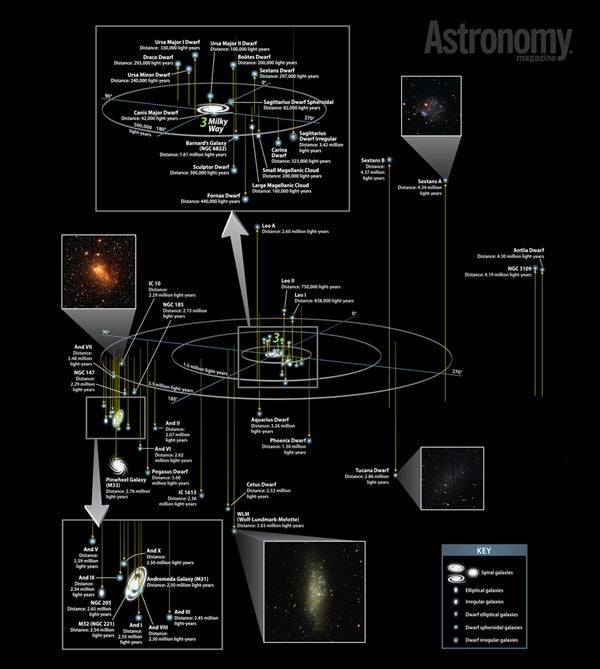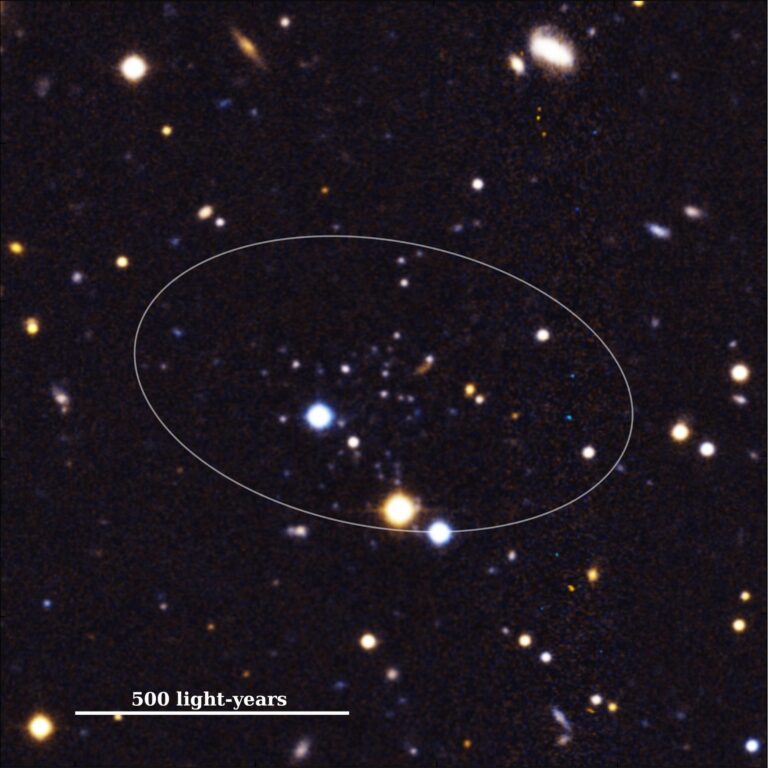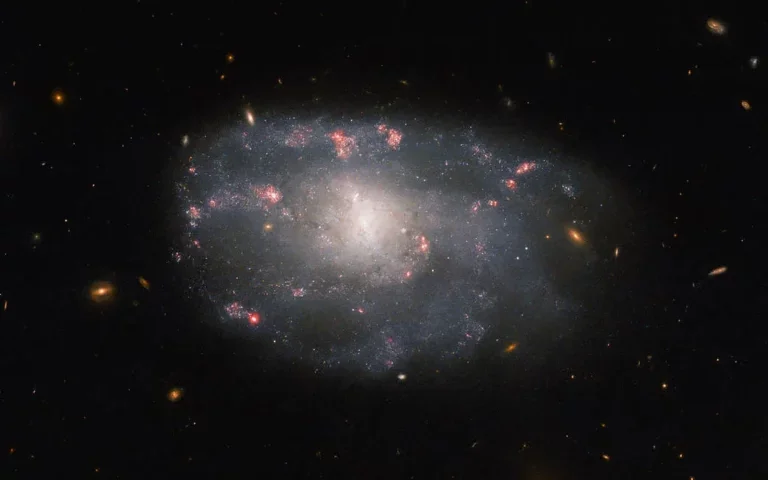Our Milky Way Galaxy wheels within the Local Group of galaxies in a relatively quiet corner of the cosmos.
The vast Virgo Cluster of galaxies, some 55 million light-years away, plays city center to our boondocks. The Virgo Cluster holds an amazing 2,000 “island universes.” Our little Local Group, by contrast, contains roughly 50 confirmed and possibly 30 unconfirmed galaxies, most of them unimpressive dwarfs.
Many, perhaps most, galaxies exist in such small groups scattered throughout the cosmos. The Local Group spans nearly 10 million light-years, and only three large galaxies lie within it. The most significant, the Andromeda Galaxy (M31), is an expansive spiral whose magnificent disk extends 140,000 light-years. Next in size is the Milky Way, with a disk spanning 120,000 light-years. The third spiral in the group, the Pinwheel Galaxy (M33), measures 60,000 light-years across.

Bringing the universe to your door. We’re excited to announce Astronomy magazine’s new Space and Beyond subscription box – a quarterly adventure, curated with an astronomy-themed collection in every box. Learn More >>.
The Local Group’s remaining members include irregulars, ellipticals, and dwarf galaxies of various shapes, most of which are quite small. The two big guys on the block, Andromeda and the Milky Way, each have an entourage of satellite galaxies. Andromeda hosts ellipticals M32 and NGC 205, dwarf elliptical NGC 147, and a slew of dwarf spheroidal galaxies including NGC 185 and Andromeda I, II, III, V, VI, VII, IX, and X — just to name a few.
The Milky Way holds the Large and Small Magellanic Clouds, both irregulars, plus many dwarf galaxies. Prominent ones lie in Boötes, Canis Major, Carina, Draco, Fornax, Sagittarius, Sculptor, Sextans, Ursa Major, and Ursa Minor.
The galaxies of the Local Group likely originated over 13 billion years ago when the first clumps of matter accreted into protogalaxies. As these clumps compressed, stars formed and ignited their nuclear-fusion fires. When the first stars and clusters emerged from the billion-year-long Dark Ages that followed the Big Bang, the Local Group stretched only 600,000 light-years across. Being so close together, galaxies merged more often back then. Such mergers may have built the Milky Way out of 100 or more protogalaxies.
This process continues: Our galaxy is currently shredding and devouring the Sagittarius Dwarf Spheroidal Galaxy, and it eventually will absorb both Magellanic Clouds. Furthermore, some 4 billion years from now, the Andromeda Galaxy and the Milky Way will collide in a clash of fireworks that ultimately will create a single messy galaxy that eventually will settle down as a giant elliptical.
Observing the Local Group’s galaxies gives astronomers a microcosm — a laboratory close at hand that represents the universe at large. A substance astronomers call dark matter accounts for 26 percent of the universe’s content, but, as yet, no one knows what the stuff is. Using a technique called gravitational lensing, astronomers have scoured the Milky Way’s halo and ruled out several suspected candidates.
Likewise, astronomers use the nearest galaxies to study where black holes form. What they’ve found in our galactic neighborhood matches up well with observations in more distant galaxies.










